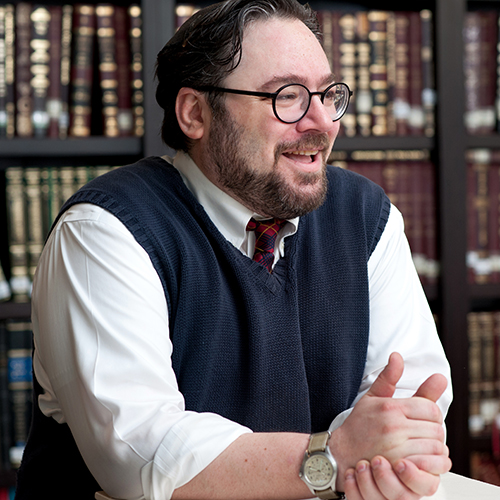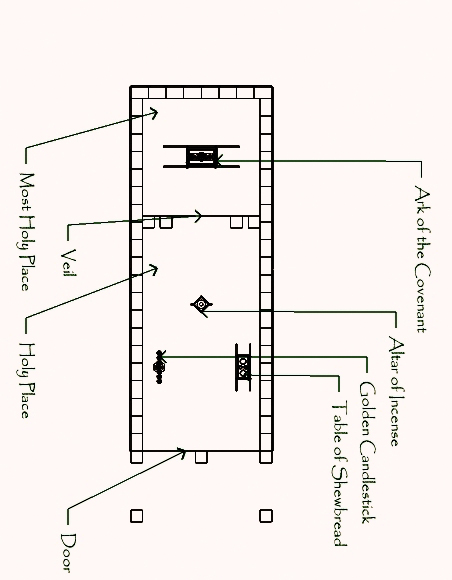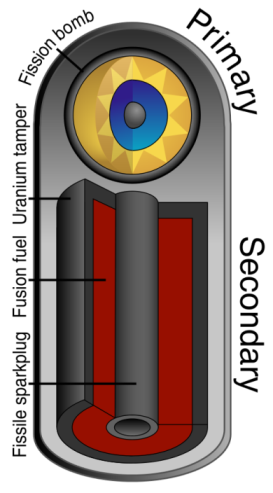The Sanctuary and the Bomb


Tabernacle Schematic
CC-BY 3.0 Epictatus at English Wikipedia

Highly schematic representation of the main components of a Teller-Ulam design hydrogen bomb
The US gave the codename “Ivy Mike” to its first full-scale experimental thermonuclear device. Designed by two of the century’s most significant nuclear scientists, Stanisław Ulam and Edward Teller, Mike’s design was a strangely beautiful one. As historian Richard Rhodes wrote in Dark Sun: The Making of the Hydrogen Bomb: “Steel, lead, waxy polyethylene, purple-black uranium, gold leaf, copper, stainless steel, plutonium, a breath of tritium, silvery deuterium effervescent as a sea wake: Mike was a temple, tragically solomonic, invoking the powers that fire the sun.”
Taking Rhodes’s metaphor further, we can see the structure of the Mishkan–sanctuary of the later chapters of Exodus echoed in the image of Mike, reproduced above: The lead lining stands in place of the courtyard curtains, the radiation channel and secondary fusion core in place of the courtyard itself, the fission spark plug in place of the bronze altar, and the fission core in place of the sanctum. Finally, the plutonium charge lies at the center of the sanctum powering it all, a replacement—lehavdil—for the Ark of the Covenant itself.
The architecture of progressive holiness, in which one approaches the source of tremendous mystery and power through stages, moving from foyer, to sanctuary, to raised altar, to the source of power hidden from view by a curtain is reflected in synagogue architecture today, just as it was in the Polish synagogues of Ulam’s childhood and the Hungarian ones of Teller’s. The image in which their design of massive power is shaped has been stripped of its traditional and ritual value. As Teller, said of his Jewish upbringing: “The idea of God that I absorbed was that it would be wonderful if He existed: We needed Him desperately but had not seen Him in many thousands of years.” This is the problem of religion in modernity: How do we turn away from the bomb, and return to the sanctuary? How do we invoke the presence of God in a world in which so many feel the absence of the Divine so profoundly?



